'Quantum Protocol' play review that creates a 'Tsume Shogi' -like play feeling with a strategy that is too deep in roguelike x card battle

Based on the type of card game represented by 'Yu-Gi-Oh!', 'Quantum ' is a deck-building card game that realizes a puzzle-like play feeling by interweaving sharp cards for each character. Protocol '. Not only does the puzzle element stand out even in the card battle x roguelike game and it has reached the realm of Tsume Shogi, but this work that the ADV part of beautiful graphics is also enriched officially corresponds to Japanese. So, I actually played it.
Steam: Quantum Protocol
The heart of the Quantum Protocol story is 'hacking,' and the story begins with a white-haired girl named Queen hacking.

This work consists of an ADV part and a game part, and hacking is the game part. The game part looks like this, using a field where your own team and enemy teams face each other in 2 rows x 5 columns like 'Yu-Gi-Oh!'.
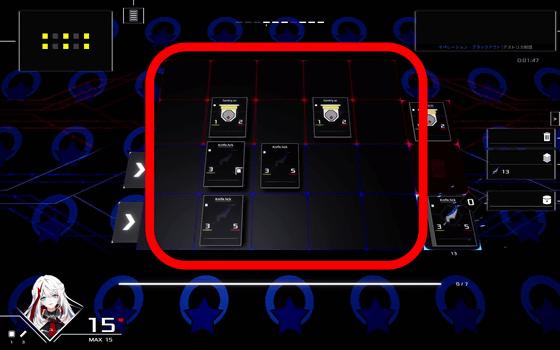
The setting is that the player puts out the hand drawn from the deck to the field and fights.
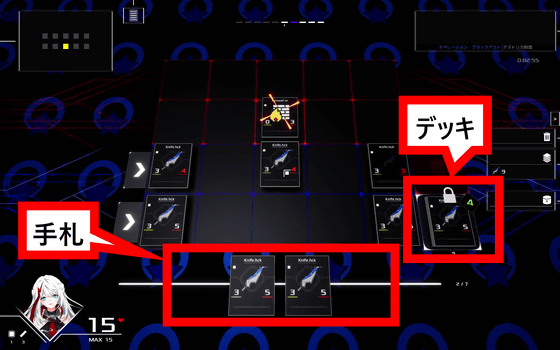
Each card has 'level (indicated by white square)', 'attack power', 'physical strength', and 'special effect' ...

You can make a normal attack forward by putting it in the field and clicking. The attacking card will be incapacitated until the next draw.

Of course, the enemy also attacks with cards in the same way, so basically the main thing is to hit each other with each other. Cards that are exhausted by the attack are carried to each 'trash'.
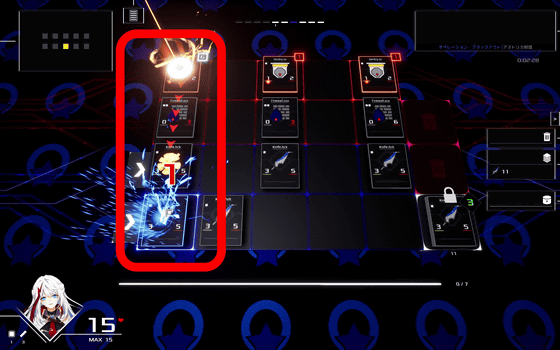
This work is a format called 'Wave', and enemies appear at once every time the wave starts, and when the enemies are annihilated, the wave is cleared. A game style such as the next wave starts as it is. Each stage will be cleared by breaking through all the waves.
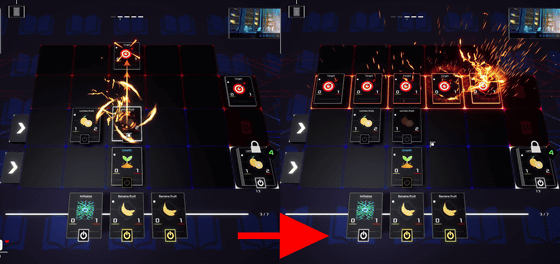
My defeat condition is to lose all HP. If you are attacked in a row where your card does not exist, it will be a direct attack and you will lose HP for the attack power. If you lose all your HP in this way, you will be defeated.
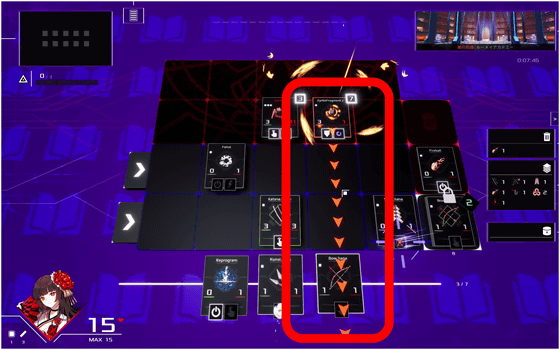
Up to this point, it is an orthodox card game, but it also has a unique element of 'execution.' To execute, click the arrow on each line ...

The cards in that line are forcibly attacked and destroyed in order from the left. You can attack all at once, including cards that are already incapacitated, but the forced attacks will be carried to the trash. There are some situations where discarding a card is advantageous, but it is basically a disadvantage because it can be used as a shield even if it is incapacitated.

By making full use of the above various actions, clear the stage by clearing the boss at the end of the stage. This is the basic flow of the game part.
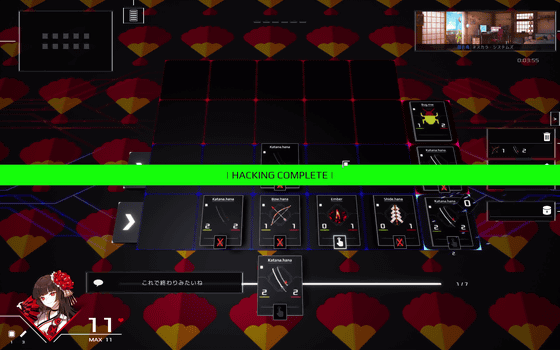
In the explanation so far, the impression is that you should hit cards with high attack power and physical strength side by side, but this game does not. The decks that can be used for each character are fixed, but depending on the deck, both attack power and physical strength are low ... Or, most of the cards have zero attack power.
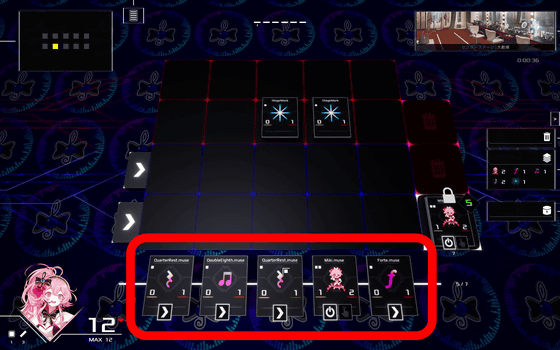
Cards with zero attack power cannot attack normally, and will defeat enemies with 'special effects'. There are roughly three types of special effects: 'Activate the moment you enter the battlefield', 'Can be activated at any time after you enter the battlefield', and 'Activate when certain conditions are met'. As an example of the type that activates the moment it comes into play, 'Apple.fruit' can bring other 'Apple.fruit' from the deck to your hand when it comes into play.
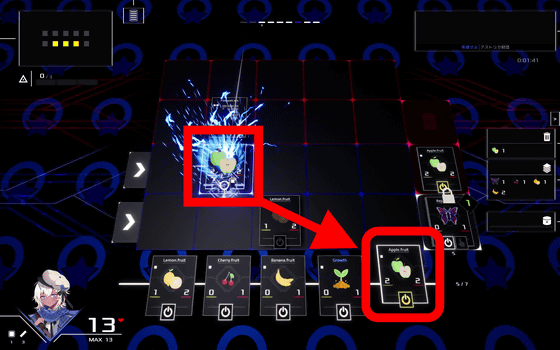
'Fireball' has the effect of inflicting 3 damage forward when it comes into play. Since 'Fireball' itself has zero attack power, it becomes a mere shield after the effect is activated.
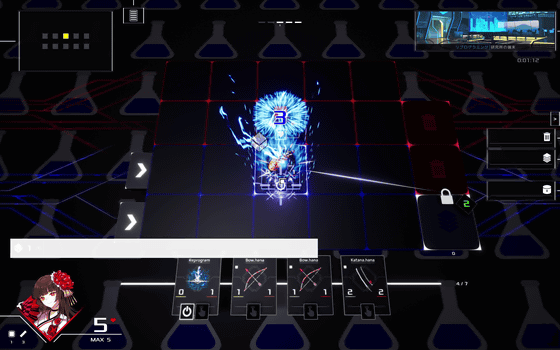
In the type that can be activated at any time after entering the field, 'Shide.hana' has the effect of returning your card in the field to your hand and then drawing a card from the deck. It will return the cards that you have already acted on or the cards that have used the effect to your hand so that you can use them again.
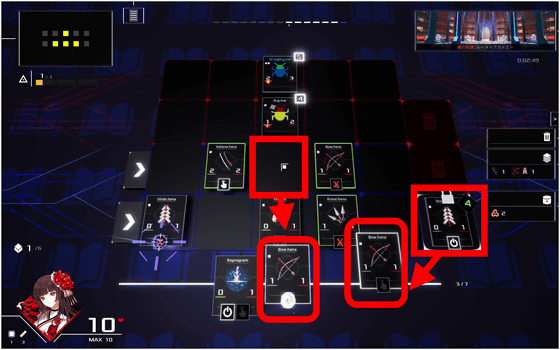
In the type that activates when certain conditions are met, 'Forte.muse' has the effect of increasing the attack power of all cards in the same row by +2 when 'executed'. It's a powerful effect, but it has a strong constraint that it needs to be 'executed' to start. However, decks that include 'Forte.muse' have a card that has the effect of 'executing' one specific card, so if you combine it with that card, you can strengthen your attack power at once.

Another major difference from general card games is that it is not a 'turn-based' game in which you and your enemies act alternately. The turns in this game only pass by your own actions, and the actions on the enemy side are 'actions with a fireball mark when the countdown written on the right shoulder side of the card placed on the enemy's side becomes zero. To execute '. In other words, in the example below, the two 'Bug.mw' placed on the enemy side will each 'shoot a 1-damage attack forward after 5 turns'.
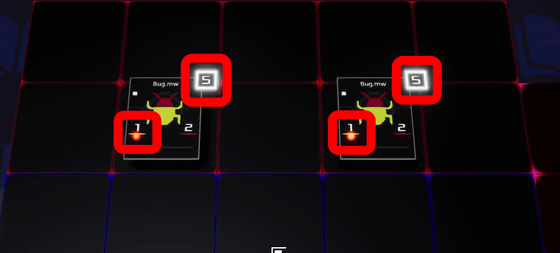
For example, in the following situation, two enemies will attack after 6 turns and 3 enemies will attack after 7 turns. Since the player's HP will be greatly reduced if all attacks are received, a strategy of defeating the enemy before acting or arranging the cards in front of the enemy to prevent the attack is required. In this way, all the actions of the enemy are known in advance, so there is a puzzle feeling that you have to think about each move before taking action.

Just as the cards on this side have various special effects, the enemy side is full of cards with various special abilities as well as simple attacks. Enemies that summon their minions and enemies with various abilities such as 'counterattack when damaged' will appear. It is possible to detect the activation of such special abilities in advance, but if various actions are interwoven, such as 'There is a normal attack, but this is a special ability ...', the difficulty level is considerable. To things. Since only enemies who only make instant death attacks appear on the stage, there were also literally 'tsume shogi' that can only be captured by a fixed procedure.
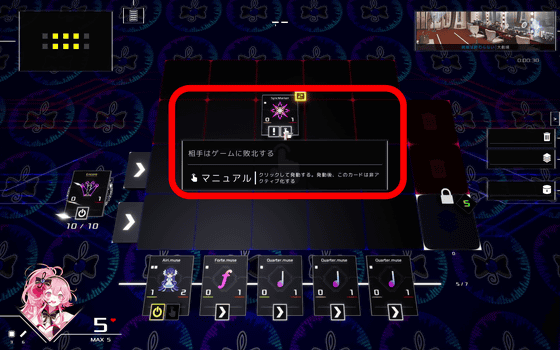
In addition, this work has a roguelike element that 'you can strengthen the deck with cards randomly acquired during the stage' as a major feature. Although multiple decks are prepared for each character, the initial cards of each deck are completely fixed. Instead, you can randomly get cards by defeating enemies with square cubes.
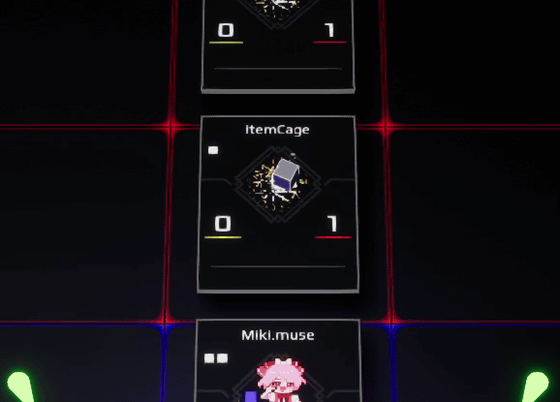
If you use the card 'Reprogram' that you got ...
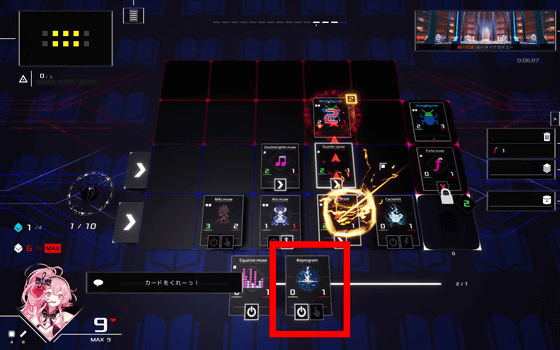
Enter the deck edit screen. You can choose which cards to include in your deck.
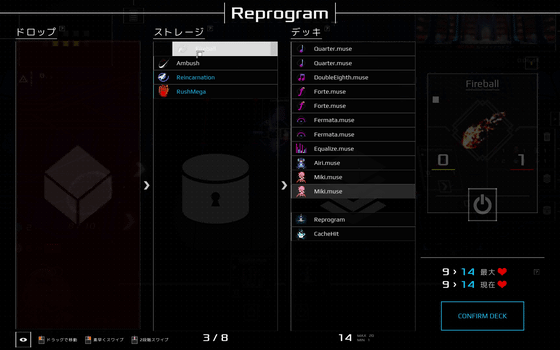
It is also possible to combine three of the same cards to level up. Leveled up cards have enhanced attack power and special abilities.
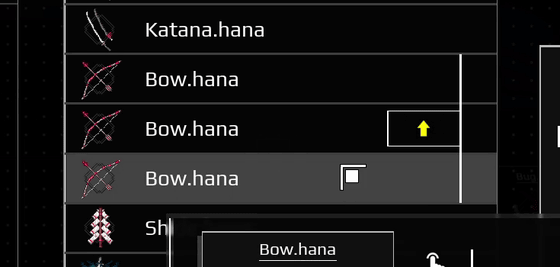
Random cards can be obtained by defeating enemies. In each stage, the order and arrangement of enemies for each wave is fixed, but since the cards obtained are random, the development changes each time you play. Cards obtained during the stage will disappear when the stage is cleared and return to the same initial deck, but it is possible to unlock the cards that appear with the points that can be obtained when capturing the stage.

Multiple characters have appeared in this work, and the direction of the deck is fixed for each character. Queen's initial deck is centered on cards with high attack power and physical strength, and is a character with a strategy of 'arranging strong cards and hitting them earnestly'.

On the other hand, the initial deck of Aurora, the daughter of the president of a major security company, is centered on cards with the effect of 'can be activated only once'. These cards deal high damage when activated, but since their basic abilities are weak after activation, the timing of activation of each card is crucial.
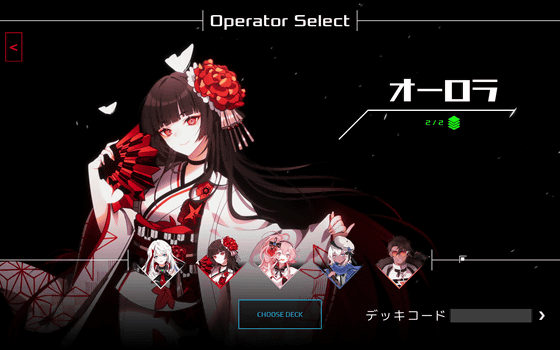
As the name implies, the character idol is an idol. It is a character that reigns at the top of the industry with stage performance combined with hacking, and the initial deck is mainly a card that starts with 'execution'.
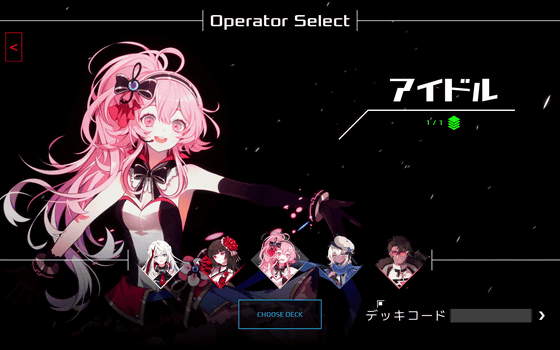
Esper's initial deck, which wears two pairs of straw shoes of a student and a genius hacker, is a combo deck with abundant types of cards that activate when it comes into play.
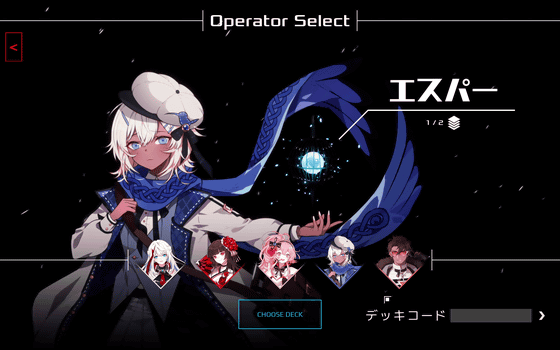
The state of playing these 4 characters is as follows.
In the ADV part where these characters appear, the story progresses like a visual novel. The daily life of each character and the motives for cooperating to challenge hacking will be gradually revealed. The translation has passed politely and has reached the same level as the Japanese game, and there is no sense of discomfort at least within the early stages.
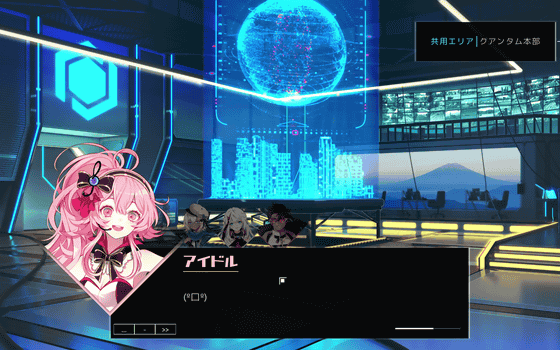
When I actually play it, it looks more like a puzzle or a tsume shogi than a card game. The deck for each character has a strong uniqueness, such as the fact that it can only generate firepower with the effect that activates the moment it enters the battlefield, and the effect does not activate unless it is 'executed', and the enemy's attack is also extremely fierce. Therefore, 'This card is an effect that activates when it comes into play, so I want to use it for this enemy who will attack next turn. But then there is no card that will be attacked here ...' You need to pull it out. And even if the stage fails, the enemies that appear in each stage are completely fixed, so it was a puzzle to play again, relying on the memory I mentioned earlier.
'Quantum Protocol' can be purchased on Steam, and the price is 1320 yen including tax. In addition, it is subject to the Steam Summer Sale that will be held until 10:00 am on July 8, 2021, and you can purchase it for 1056 yen including tax, which is 20% off during the same period.
Steam: Quantum Protocol
https://store.steampowered.com/app/1328530/Quantum_Protocol/
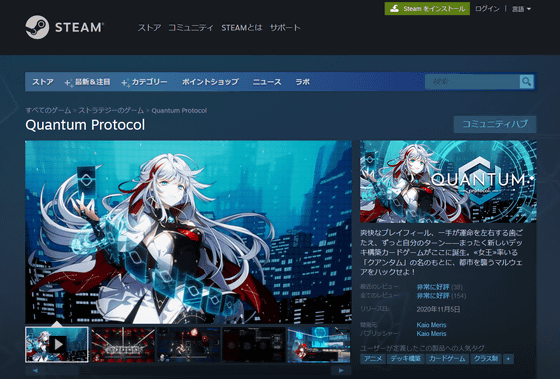
Related Posts:







